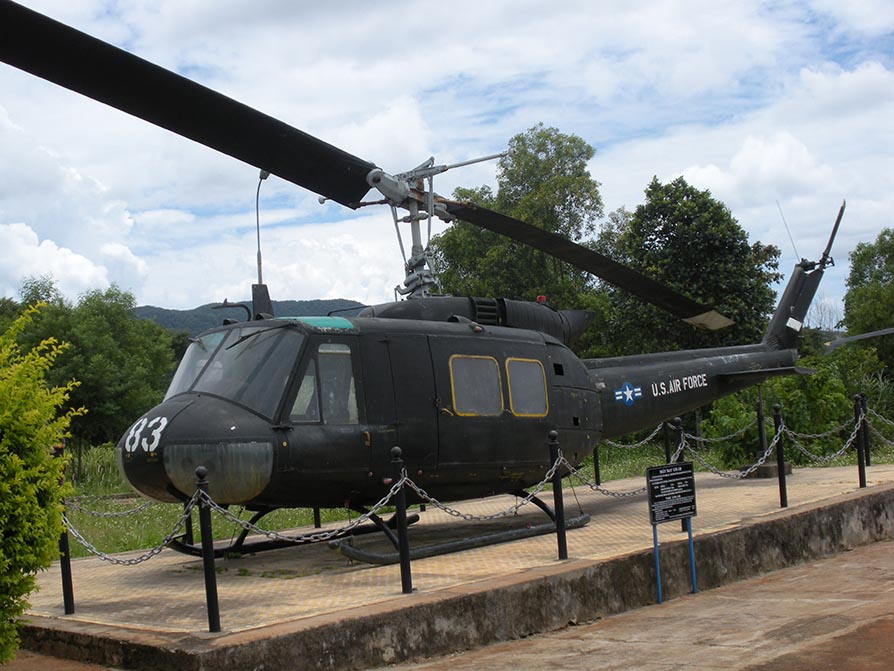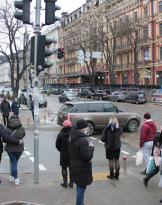Since the days of independence, relations between Vietnam and its neighborhood have been rife with tensions. This was the case in '78 with Pol Pot's invasion of Cambodia; it was so with the war wanted by China in '79; and this is the case for present-day Laos, a backyard but a battleground with Beijing for political and economic hegemony.
If on the one hand this underlines a political weight in Indochina which has been consolidated by 40 for years, it also introduces us to the evidence that today's Vietnam is a heavy pawn in the new geopolitical contexts of the East.
Everything revolves around relations with China, no longer relegated to the different interpretation of socialism, but having become the pendulum of stability for the entire region.
Among red flags and an infinite number of military shrines, traveling around Vietnam offers the idea of an only apparent immobility. On the surface, everything drips according to the slow rhythms of an indolina indolina, humid and fascinating: the ubiquitous military helmets; the wrought iron of the French coffees survived the decolonization; the melancholic aromas from Nouveau Roman; the litanies of street vendors ... Everything in Vietnam looks like a still image. In reality, everything changes rapidly.
To economic and social transformations mentioned in the first part of the report, the political-military aspects that make Hanoi a strategic pivot sum up.
Vietnam is part of a critical friction between former US enemies and China, committed to expanding its maritime sphere of influence between the Korean peninsula and the Gulf of Tonkin. In this sense the facts preceded the words: the adoption in the 2012 of a Maritime Law that claimed rights on the Paracel and Spratly islands was indirectly supported by Washington.
The pressure did during with the litigation opened at the Hague Court from the Philippines, a historic US ally, regarding sovereignty over the South China Sea.
In both cases, Beijing went straight: it raised its tone with Hanoi and declared it did not accept the international arbitration requested by Manila, claiming 80% of the sea in question. To make its intentions even clearer, it has militarized the artificial islands of the Spratly archipelago, widening its range of action and further increasing the tension.
US and Vietnam then, allies against China?
The picture is more complex.
In reality, the role of Moscow, Vietnam's historic friend, makes the difference. The generous Soviet aid pushed Hanoi first towards independence (North Vietnam), then to the conquest of Saigon and to the reunification of the '75.
With the end of the Soviet Union, relations between Moscow and Hanoi initially lost momentum. Only with the military and political rebirth of Russia the old alliance was filled with new contents, the effects of which materialized in the second half of the 2000s. New political and military data were added to Russian investments in Indochina.
The naval base of Cam Ranh Bay, abandoned in the years' 90, has now returned to being a landing point for the Russian fleet, the only one to have free access without special permits. Not only: the main supplies of war material continue to be Russian and in the light of recent acquisition programs, they are generating a qualitative leap in the already considerable military weight of Vietnam.
In this case it is necessary to make some clarifications.
The Vietnamese armed forces are the backbone of society, the sentinel of a rigidly controlled political and economic system. Traditionally efficient and highly regarded by analysts, they are nevertheless structured according to the logic of territorial defense, in the wake of decades of experience and bound by the conformation of the territory. The hard lessons given to French, Americans and Cambodians (somehow even to the Chinese ...) have defined the quân Degreei Nhân Dân Viist Nam (the Vietnamese People's Army) as unsurpassed on its own territory but with a projection capacity limited to the neighborhood. 
The return of Vietnam, or rather its entry into a macro-regional context, changes the cards on the table.
The first litmus test of this gear shift is the evolution of Hải quân nhân dân (the Navy). Configured for coastal patrolling and equipped with small tonnage ships or even prey to war, it has begun to reprogram its institutional tasks in function of an extension of the skills to the east. Behind the upgrade is Russia.
In 2009, Vietnam has invested 3,2 billion dollars for the acquisition of six submarines Kilo (equipped with attack missiles) CLUB) and for the adaptation of the Cam Ranh Bay base to the underwater forces. All 2018 Fregates will be operational by the 6 Gepard acquired from Moscow, bringing the offshore units equipped with the latest generation of anti-ship missiles to 24. The missile acquisitions, including some S-300 batteries, make the Navy no longer the cinderella of the Vietnamese Armed Forces, but an authentic projection force capable of facing possible Chinese provocations without fear.
The US meanwhile weaves and waits, trying to shorten the delays accumulated in the South China Sea over the past forty years.
The Mau, a senior Vietnamese geopolitical officer, says "Relations between Vietnam and Russia are solid and aimed at a global strategy of the two countries."
In reality, in anticipation of an increase in tension between China and America, they are also useful for regional stability. Russia, despite the rivalry at the time of the USSR, today has excellent relations with China, in a logic of anti-US embankment. The renovated flirtation between Russia and Vietnam it therefore has not only a bilateral significance, but is decisive for preventing the degeneration of the rivalry between Hanoi and Beijing. Moscow is essentially the only mediator of friction between Vietnam and China and the only subject capable of preventing the tension in the South China Sea from turning into war.
The United States, on the other hand, has every interest in raising the tone of contention, in an attempt to re-enter an area of mobile equilibrium. The end of the US embargo on Vietnam and the increase in US naval presence in the area must be interpreted in this sense.
In Indochina everything seems immobile, everything changes.
At the Dan Sinh market, in the former Saigon, there are thousands of original US zippos ... Less than a kilometer away, there is still the Rex Hotel, place of Rendez Vous between American officials and the press at the time of the war and Caravelle, another place vintage of the last days of Saigon. Who knows what the thousands of Americans come back to live in after they have lost their youth ...
Everything smells of movies, of history, of incredible nostalgia ... It also seems identical to the light that filters the flags on the 17 ° parallel once a border between the Communist North and the south-western. One remains Ba ba ba cold and a cheap cigarette to watch the sea beyond an anonymous beach. Beyond the fishing boats unchanged for centuries, a few miles from here, they cross enormous interests.
Vietnam is an absurd country, hostage to its damned past but with a very strong vocation for the near future. It is easy to see, facing a cave on the Red River, in Hanoi. Time stands still, but the water is flowing fast.




(photo: by the author e Hải quân Nhân dân Việt Nam)












